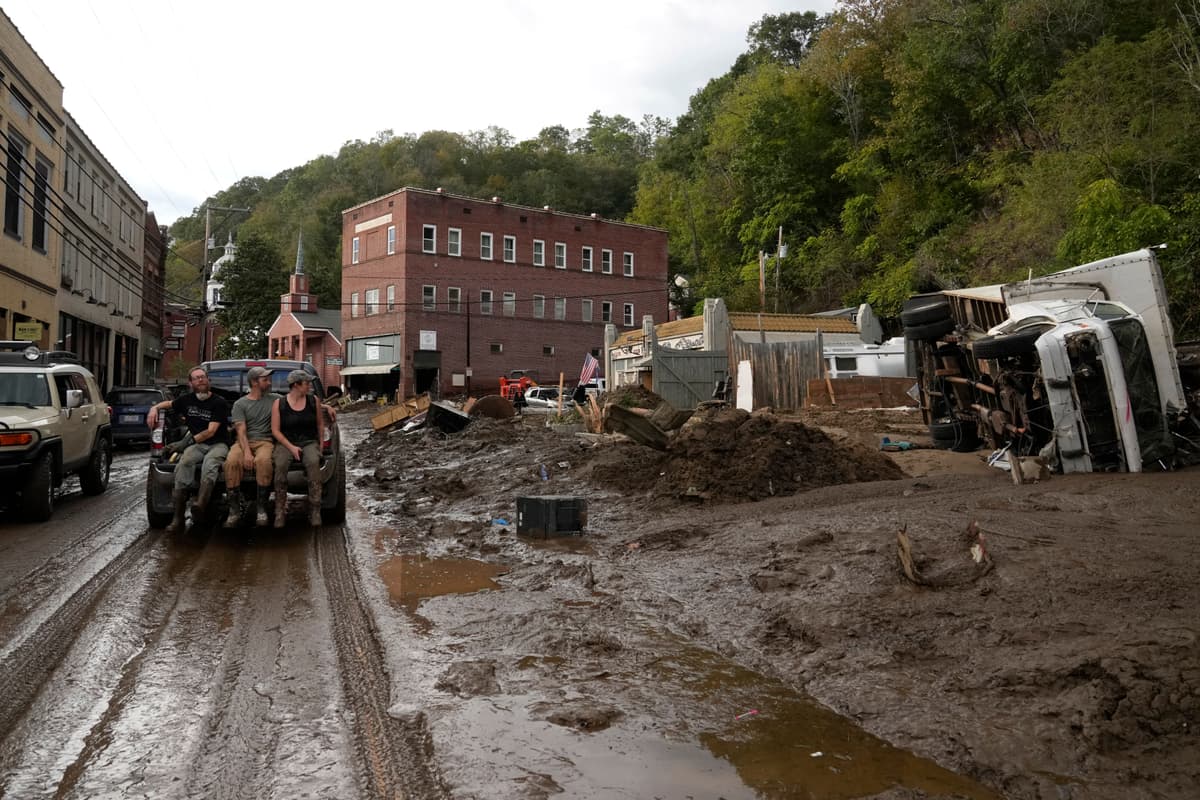Helene Exposes Failures of America’s Federal Emergency Response System — Time To Replace It
The current system has the wrong principles, philosophy, and culture. It would be more effective to scrap it and develop a new system that works.

America’s emergency response system is entirely ineffective. The Federal Emergency Management Agency is a typical bureaucracy. It can deal with small problems, but it has no capacity to quickly move enough assets to respond to big crises.
This is not a new problem. Almost 20 years ago, I was co-chairman of a Business Executives for National Security Study Group which spent a year studying how to dramatically improve our emergency response effort. We warned about our systems’ deficiencies in a 2007 report requested by Congress after the Hurricane Katrina disaster.
Our report, “Getting Down to Business: An Action Plan for Public-Private Disaster Response Coordination,” had nine major recommendations for a better emergency response system. We recommended an approach which relied on existing large private logistics systems, such as Walmart, FedEx, UPS, Costco, Target, Amazon, and others. These companies have substantial resources — and they practice delivering huge volumes of goods to the American people every day.
The tragic delayed response in the mountains of North Carolina is a case study in what is wrong with our current federal emergency management systems. FEMA arrived too late, with too little, and then bureaucratically made it harder for volunteers and others to continue helping the impacted people and communities.
The current system simply has the wrong principles, philosophy, and culture. It would be more effective to scrap it and develop a new system that works.
If we follow the normal pattern, the House and Senate will have hearings. Members will ask tough questions, posture for the folks back home, and then try to pass marginal improvements which the bureaucracy will absorb without changing.
Getting real change in the ability of government to deal with emergencies is a matter of life and death. America is moving toward a time of national survival from a time of national security. A large-scale electromagnetic pulse attack would put us in radically worse shape than the current problems in North Carolina.
My friend and coauthor, Bill Forstchen, wrote a brilliant novel, “One Second After,” about the impact of an EMP attack on the lives of North Carolinians in a small town. Ironically, he lives at Black Mountain and teaches at Montreat College. So, he is in the heart of the hurricane-imposed collapse of electricity and connectedness. He told me that the Hurricane Helene disaster is minor compared to the widespread disaster an EMP attack would cause.
Mr. Forstchen reported that it took 17 days for a unit of the 101st Airborne Division — Air Assault — to deploy to Black Mountain where he lives. If the Biden-Harris White House had ordered them to intervene, they could have been there four or five days after the storm. Mr. Forstchen also reported he has seen no FEMA employees at Black Mountain — although they are apparently plentiful at Asheville.
He pointed out that the conservative Christian community and local churches spontaneously came together and provided help to their neighbors. They collected and delivered supplies of food, water, and medicine long before the federal bureaucrats arrived. Mr. Forstchen also raved about the impact of the volunteer helicopter operations.
Long before the federal government started bringing in helicopters, volunteers showed up for Operation Helo, led by Matt McSwain and Eric Robinson. Operation Helo ultimately had roughly 90 private helicopters flown by volunteers who paid for the fuel out of their own pockets. They delivered supplies and brought people out of areas cut off by flooding and washed-out roads. Meanwhile, the military has about 5,500 helicopters and a large base in North Carolina from which they could be staged.
Franklin Graham’s Samaritan’s Purse is based at Boone, North Carolina in the heart of the mountainous region hit by Hurricane Helene. Mr. Graham lives at Boone, so he knows the region first-hand. Samaritan’s Purse is an amazing charitable Christian operation with more than $1 billion a year in revenue. We got to know its operation well when my wife Callista was the American ambassador to the Holy See.
In 2020, Northern Italy was hit hard by Covid. As a result, the Italian public health system was overwhelmed by the scale of the epidemic. Samaritan’s Purse flew in a 68-bed mobile hospital with 60 doctors and nurses into Cremona, the heart of the epidemic. Italy’s health minister later said it was a major factor in the health system not breaking. The Samaritan’s Purse team is applying the same energy and enthusiasm at home — and they are saving lives and helping families.
We need a new, different architecture for emergency response. It should include a deliberate involvement of religious institutions, a pre-planned relationship with major logistics systems, and a heavy reliance on governors for rebuilding and reconstruction. We don’t need an improved FEMA. It is a failure. We need a new structure that is much more integrated with the larger community system. If Congress can resist the urge to schedule dozens of hearings and talk about fixing FEMA, it could instead invent a new system that works.

